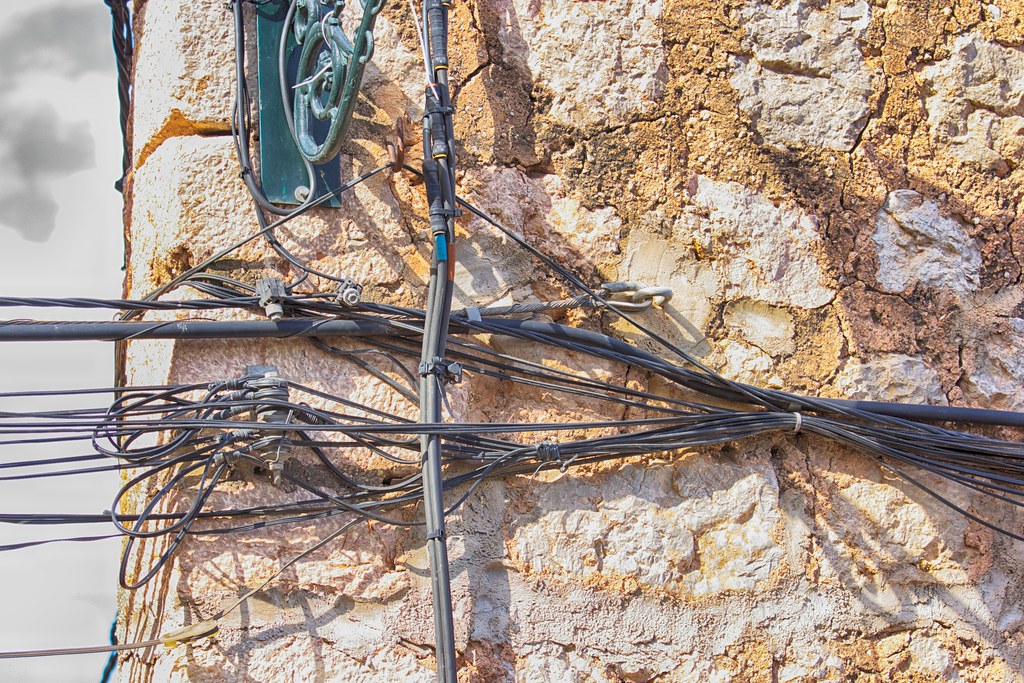The Torrevieja Council has told telecommunications companies to take measures that guarantee the security of aerial fibre and telephone wiring.
Currently companies are allowed to use the same aerial routes created by Telefónica, but this has saturated the infrastructure. Large areas of the Torrevieja centre maintain overhead lines despite the fact that poles and cables invade the public domain and generate accessibility problems for pedestrians. Burying the cable is much more expensive.
As such, many areas of primary housing such as La Mata, with the most striking example on Avenida de Alemannia with aerial cables two meters high, Nueva Torrevieja and large residential neighbourhoods such as La Siesta use these this aerial routes.
The new municipal ordinance, currently being prepared, to regulate Telecommunications infrastructure states that overhead lines should only be used provisionally, although now they are the ones that are mostly used. It points out that if they are less than 5.5 metres high – as is the case in most areas – they will be considered a very serious violation.
Currently, Telefónica does not provide an urgent response to municipal calls to guarantee the security of wiring. There are other more dangerous situations, such as those that occur with electricity pylons that lose stability, and that threaten to fall onto a public road, or that generate accessibility problems for people with reduced mobility. wheelchairs and pushchairs.
Meanwhile, the councillor for Works and Services, Sandra Sánchez, has said that the new ordinance is ready for its initial approval and exposure to the public that she hopes will legally endorse the claims, not only technical, but also from an aesthetic and environmental point of view.
This ordinance for the regulation of Telecommunications points out that the proliferation of network deployments, especially those of fibre optics, in parallel with old networks, have an aesthetic impact, and cause risks for people and property, in addition to co-location conflicts between operators and with property owners and “they require their own municipal regulation.”
The ordinance states that telecommunications infrastructures must be compatible with the requirements of preserving the urban and natural landscape, minimizing, as far as possible, conflicts and the urban, environmental, and visual impact that their implementation may produce as well as guaranteeing the application of state and regional regulations in their aspects of health and environmental protection.
It also says that aerial lines supported on poles will not be allowed unless the impossibility of carrying out an underground deployment is justified. It also regulates the laying on the facades of buildings, which is also very widespread, especially in the centre of the urban area.





